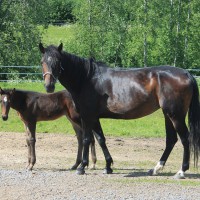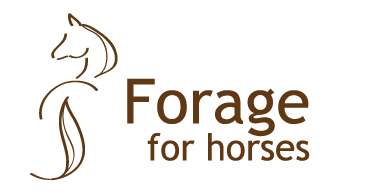The right forage for mare and foal

In a smaller study with four mares with stallion foals, standardbred trotters, the mares’ milk and the foals’ weight gain was examined during feeding with only nutritious forage (timothy, meadow fescue, red clover) and with less nutritious forage (timothy, meadow fescue) complemented with concentrate. Both diets were complemented with minerals. Both diets fulfilled the wanted nutritive content.
The mares were divided into two groups with two mares with foal in each group. One group started with the forage diet for 27 days and then switched to the concentrate diet for 27 days. The other group started with the concentrate diet and then switched to the forage diet. Table 1 shows the dry matter (DM) and nutritive content of the two forages used. The concentrate used was oats and soybean meal.
The mares’ mean body weight did not differ depending on diet. On the forage diet the mares’ percental forage DM intake was as most 2.2% of body weight (twice the intake on the concentrate diet) and even greater forage intakes were possible. For the foals the forage diet resulted in significantly higher body weights from day 7. The mean body weight for the foals during the entire study was 185 kg on the forage diet and 180 kg on the concentrate diet. It is likely that the foals could eat from their mothers feed on both diet regimes. Although day 27 there were no significant differences in weight changes, see table 2.
The DM and ash content of the mares’ milk did not differ between diets which indicate that the water content and the total mineral content in the milk was the same on the two diets. Also the foals’ weight gain was equally good on the two diets which were expected as the diets theoretically contained the same amount of energy, protein and lysine.
By feeding broodmares with forage with higher nutritive content concentrate can be avoided which gives longer eating times and reduced risk of behavioural disturbances. To feed a lot of forage and no concentrate also reduces the risk of diet related diseases such as colic and ulcers.
Sara Muhonen, AgrD


